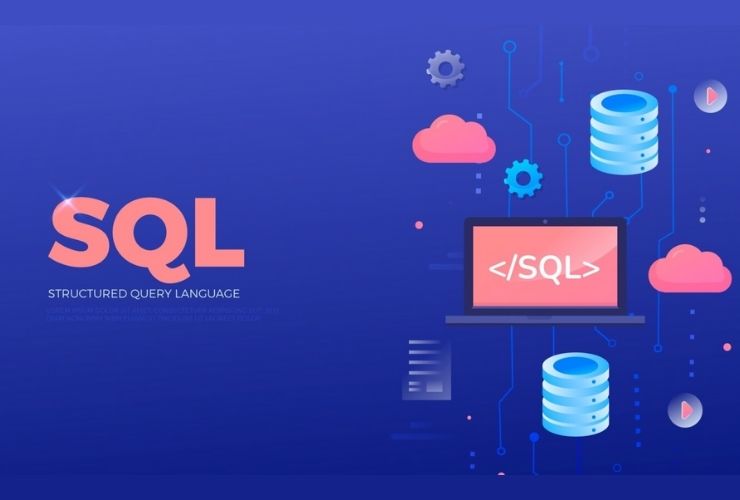In database administration, data simplification and organization are essential to performance and efficiency. SQL Views are one of the most valuable tools that database administrators and developers can utilize to improve data organization and query efficiency.
SQL views offer you a straightforward way to construct virtual tables that make it easier to cope with complex queries, enhance performance, and provide your database with an easy-to-use interface to handle. In this article, we take you through constructing and sustaining SQL views so that you can optimize the organization of your database as well as your work process.
What is a SQL View?
A SQL view is a virtual table that is based on the output of a SQL query. Views, unlike regular tables, do not store data; they store the SQL query that generates the data. When you query the view, the database runs the query that is behind the view and returns the result as if it were a table.
SQL views are very helpful in the following ways:
- Data Abstraction: Views abstract the complexity of the underlying table structures so that users may work with simple representations of data.
- Security: Views allow selective access to some data by restricting access to individual columns or rows.
- Simplification of Complex Queries: Instead of replicating complex SQL queries across your application or reports, you may define them once in a view and query the view, making it easier to maintain and update.
Benefits of Using SQL Views
Below are some reasons why you should use SQL views in your database design:
1. Simplicity of Queries
SQL views give you a chance to create simple complex queries. Assume that you have some set of tables to join many times; then, you might like to have a view created with this join logic so you just query a view whenever you need this result. You would prevent repeated complexities in issuing SQL statements in your applications to fetch data.
2. Data Security
A view can be employed to offer selective access to confidential information. You can hide confidential information while giving access to non-sensitive data for authorized users to work with by creating a view that only displays certain columns or rows of tables below.
3. Performance Improvement
While opinions themselves are not necessarily more efficient, they can make the formulation of queries that in turn increase query performance easier. For instance, rather than repeating numerous joins or aggregates, a view contains such behavior, saving database load as well as overall performance.
4. Consistency and Reusability
Once created, views can be reused throughout various areas of your application or reports. If repeatedly the same set of complex operations is to be executed, a view makes sure that the logic is the same and minimizes errors caused by writing similar queries in various places.
5. Simplified Data Maintenance
By decoupling queries involved into views, you make it easier how easy it becomes to alter the logic without making contact with the remainder of your application. It’s simple enough to do so in one place (the view) if you’d like to alter the manner in which data returns without changing all the application code accessing data.
How to Manage SQL Views
Once you’ve created a view, it’s important to effectively manage it over time. Here are some key management practices to keep in mind:
1. Modifying a View
Every now and then, your data needs or business logic will change. When that happens, you might have to change a view. SQL allows you to use the CREATE OR REPLACE statement to modify the existing definition of a view. This is very handy when you want to change the logic inside the view without dropping and rebuilding it.
2. Dropping a View
If a view is no longer needed or you need to delete it to reorganize, then you can drop the view using the DROP VIEW command. It will remove the view from the database but will not affect the underlying tables and data.
3. Monitoring and Optimizing Views
Although opinions allow questioning, it is crucial to monitor their performance, particularly if they are created based on intricate queries involving multiple joins or subqueries. As time goes by and your database increases, an optimally designed view might slow down, and therefore checking their execution times from time to time and fine-tuning the underlying queries might be crucial.
4. Naming Views Correctly
To stay unambiguous and clear, giving your opinion a sense of purpose is essential. Use descriptive and self-evident names that express the purpose of the view so others or later developers can grasp its purpose and intent.
Best Practices for SQL Views
For maximum usage of SQL views, it’s necessary to follow some best practices:
1. Utilize Views for Simple Query Logic
Avoid complicating opinions with deeply nested joins or views that are pointing to other views. Highly nested views slow down and are more difficult to debug or maintain. Keep your views simple and manageable.
2. Avoid Using Views for Heavy-Weight Data Modifications
Views are best utilized to fetch data and not for data manipulation. Although some views (such as simple views on a single table) may allow updates, generally it is advisable not to use views for insertion, updating, or deletion of data. Simple views with too many joins and aggregations are likely to hide data modifications and yield unexpected results.
3. Use Indexing Wisely
While the views themselves cannot be indexed, it’s important to index the base tables correctly. In case the views are doing aggregation on large sets of data or there are joins involved, having the base tables indexed in the right manner will improve the retrieval process and increase the performance of the view.
4. Monitor Performance
As with any database object, you need to keep an eye on the performance of views regularly. Views can simplify queries, but if they are poorly optimized or have large amounts of data, they can slow down performance. Make sure you test and optimize the underlying queries that form the basis of your views regularly.
Conclusion
SQL views are an important tool to simplify using complicated queries, enhance data security, and maintain your database more efficiently. SQL views give you a way of abstracting out complicated logic, reducing redundancy, and simplifying query execution. Mastering how to create, manipulate, and tune views can enable you to simplify the structuring of your data as well as overall database performance of your SQL database.
Start applying SQL views to further develop your database administration and querying. Employed in the correct manner, they are able to automate your processes, enhance data protection, and possess a better organized and efficient database system.














